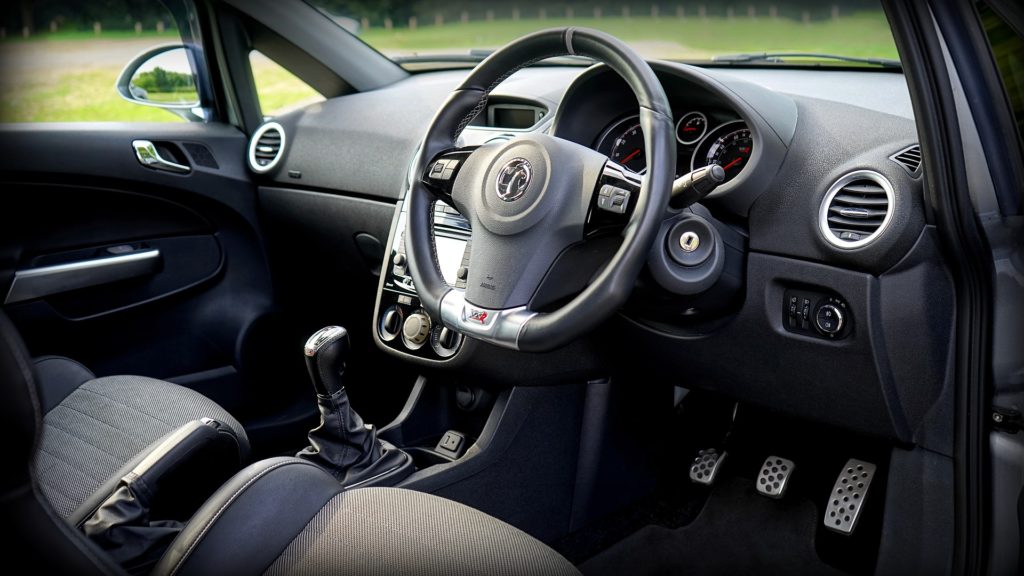What Is A Manual Transmission? Pros, Cons & Types
-
Pete Ortiz
- Last updated:

Many people will be asked over the course of their life whether they can drive a stick shift. Stick shift is simply the colloquial term for a car with a manual transmission. Manual transmissions used to be much more common in the United States, but they have been overtaken by automatic transmissions. People ask each other if they can drive a stick because it is no longer common. Driving a car with a manual transmission takes a lot of extra work and learning in order to pull off properly.
How exactly do manual transmissions work? Who still uses manual transmissions? Are there any serious benefits to learning how to drive a stick? This guide will answer all of these questions and more in order to give you a comprehensive overview of manual transmissions and how they work.
 How Does it Work?
How Does it Work?
Manual transmissions use two primary parts to work. The first is the clutch. The clutch is a pedal on the floor near the brake that is used to release the gears in the gearbox. To change gears, the gears have to disengage from one another so they can move freely. A transmission where the gears are still engaged and interacting with the engine cannot switch. Every shift in a manual car must be accompanied by pressing the clutch in order to function.
The second part of a manual transmission is the hand shifter. The shifter is located on the center console and is used to move the gears from one setting to another. The shifter is a knob connected to a shaft that goes into the engine and moves the gears up and down. Manual transmissions are called that because it requires the driver to manually move the gears from one level to another.
To change gears with a manual transmission, you should let off the gas and press the clutch pedal. Once the clutch is pressed, you can move the shifter from one gear to the next. If you are accelerating, you will move the shifter up to the next gear, and if you are slowing down, you will move the shifter down to a lower gear.
When the clutch is pressed, the gears disengage and allow the driver to move them between different levels using the shifter. Typical cars feature a 6-speed transmission meaning the shifter will contain six separate gears plus neutral and reverse. Each one of these settings requires the shifter to be in a different position which represents the physical gears in the gearbox being moved and placed into position by the driver.

Where Are Manual Transmissions Used?
In the United States, manual transmissions are used in three key areas. Racecars use manual transmissions for their enhanced performance. In NASCAR, the Cup Series cars use a sequential shifter, while the Xfinity Series cars use a traditional H-shifter. Semi-trucks also use manual transmissions because they last a lot longer than automatic transmissions, and they are easier to upkeep. Those traits are important for trucks that are planning to be on the road for a million miles or more. Lastly, manual transmissions are prized by niche drivers who prefer an enhanced level of control over an automatic transmission.
Manual transmissions are also heavily used in other countries. In Europe and Asia, the rate of cars featuring manual transmissions is 80% or more. In the United States, that number is a paltry 3%. Around the world, manual transmissions are still far more common than automatic transmissions. The good news is that learning how to drive with a manual transmission in the United States will translate to other cars around the world.
What are the Different Types of Manual Transmission?
There are a few different types of manual transmissions and stick shifts to be aware of. The most basic and most common is the traditional H-shifter. An H-pattern shifter is a standard 6-speed manual transmission that features the shifter in the center console of the vehicle. The name is derived from the fact that the pattern used to shift between all of the gears resembles an H and requires the driver to move the shifter in an H-pattern. But this is not the only type of manual shifter available.
If you are a fan of classic cars, you might run into an old-school manual shifter. The manual transmissions from the 1950s through the 1970s were different from the modern versions. Many of these old cars featured a 3-speed transmission that had a long stick that attached to the floor rather than having a center console. These transmissions had fewer gears and were made from much older technology than the current models.
Lastly, there are brand new transmissions that use paddle shifters rather than an H-shifter. Paddle shifters use sequential gearing where the driver goes up and down the gears manually by pressing paddles on the back of the steering wheel. This new type of transmission is most common in high-end sports cars and racecars. However, the technology might start to trickle down to more normal cars in the near future.

Advantages of Manual Transmission
Manual transmissions come with a range of benefits over automatic transmissions. Manual transmissions are much more durable in the long run. A good manual gearbox can last 200,000 miles or more, while an automatic transmission usually burns out around 100,000 miles. Manual transmissions also require less maintenance and are cheaper to upkeep than an automatic transmission. A typical manual transmission will only need an occasional gear fluid change to keep it running for years to come.
Manual transmissions also provide better fuel economy than automatic transmissions. Manual transmissions are also cheaper to buy than automatics. The sticker price for a manual car should always be lower than the same car with an automatic. For the speedsters and professional drivers, manual transmissions also provide more fine-tuned control over the vehicle, which can lead to better overall performance and acceleration rates.
Disadvantages of Manual Transmission
The main disadvantage of manual transmissions is that they require a lot of extra work to learn. Since manual transmissions require coordination between the shifter, the clutch, and the gas, they can be tricky to master. The learning curve is what makes manual transmissions less common than automatic transmissions.
Since manual transmissions are much rarer than automatic transmissions in the United States, it can make it difficult to resell a manual car versus an automatic car. It can also make lending out your car to other people more difficult since most people can’t drive a stick shift anymore.
Manual transmissions also suffer in certain types of terrain. Areas with heavy congestion that leads to stop-and-go traffic will be a nuisance for manual cars. Areas with a lot of hills and steep inclines will also be a challenge for manual drivers.
Frequently Asked Questions (FAQs)
Are Manual Transmissions Better Than Automatic?
Neither manual nor automatic transmissions are better than the other. They both have their own benefits that appeal to different sets of drivers. In terms of longevity and maintenance, manual transmissions are better in the long run, but those benefits come at the cost of some serious drawbacks. Manual transmissions perform better than automatics, but they take a lot more focus to drive than an automatic. Most people prefer to have their transmission work without having to think about it, which is a huge positive for automatics.
Are Manual Transmissions Faster Than Automatic?
In terms of top speed, manual cars are no faster than automatic cars. Manual transmissions are faster in terms of acceleration and shifting. A manual gearbox can shift as fast as the driver can, which means a skilled driver can shift much quicker than an automatic transmission. This can help a car accelerate to top speed way faster than an automatic. This does not have a lot of application for the average driver, but it can be important for racecar drivers and big rigs trying to get up to speed.

Do Cars With Manual Transmissions Get Stolen Less Frequently?
Law enforcement agencies do not make a distinction between manual cars and automatic cars when it comes to car thefts. However, manual cars have some things working in their favor that can help prevent theft. First, not everyone can drive a stick shift. If your would-be thief can’t drive a stick, your car will be safe. Since manual cars only make up 3% of vehicles in the United States, they have a much lower chance of being stolen in terms of raw numbers. Manual cars also have a more niche market and lower resale value than automatic cars, which can also make them less attractive targets to car thieves.
 Conclusion
Conclusion
Manual transmissions are actually much simpler than automatic transmissions. They have fewer parts, more manageable maintenance, and they last a lot longer. The sequence needed to operate a manual transmission is also simple, but it takes time and patience to learn. If you have the determination to learn how to drive a stick shift, it will allow you to be able to drive almost any vehicle in the world without worry.
Featured Image Credit: Pixabay
Contents

 How Does it Work?
How Does it Work?